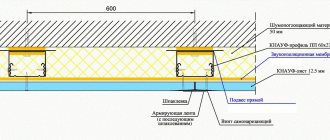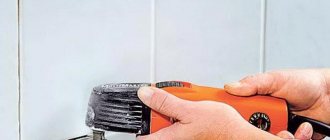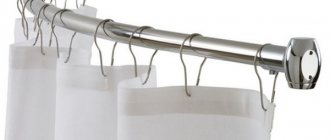A sewer smell appears in the bathroom from the drainage system due to breakdown, drying out, or lack of a water seal in the plumbing products. Less commonly, the cause is a leak at the joint of the internal sewer, the absence of a drain pipe, or an insufficient slope of horizontal lines.
You can eliminate the unpleasant smell in the bathroom with your own hands in a short time at minimal cost. To do this, you need to know the structure of the drainage system, water seal and sewer ventilation.
The main causes of unpleasant odor in the bathroom
- Making mistakes during the design or installation of a sewer system.
- Incorrect angle of inclination of sewer pipes. If the angle is very small, then wastewater may stagnate and a rotten smell may appear.
- Malfunctions associated with the operation of the siphon. If there is a higher pressure in the sewer than atmospheric pressure, air bubbles escape through the siphons into the room. This occurs due to the filling of pipes with drainage due to insufficient pipe diameters, blockages or icing.
- Leaks. Water from the sewer system passes through leaky pipe joints.
- Low level of ventilation. To avoid air stagnation, natural or forced ventilation is installed.
- Blockages in pipes. The most common option.
The reason for the smell in your bathroom?
VentilationSewerage
In what cases can you not do without professionals?
If you are not sure that you can fix the problem yourself, count on the help of a professional. Reasons why you should look for a specialist:
- suspicions that the musty smell is coming from neighbors (pigeons and rats may fall into the ventilation shaft);
- the problem arose due to improper installation of sewerage or ventilation immediately after repair;
- a sheet of paper attached to the ventilation grille was not attracted by the air flow;
- when replacing an old system with a new one.
To make changes to the system related to removing the causes of odor from the sewer, invite specialists who will do the work competently and effectively.
The article has been verified by the editors
How to eliminate sewer smell in the bathroom?
The problem can be solved by cleaning the pipeline, adjusting the ventilation system, sealing joints, or reinstalling the exhaust system.
The fact that there is no water in the toilet water seal can be determined with the naked eye. To remove sewer smell, drain the water to create a clear plug of water. If the water level in the drain is low, difficulties may arise due to improper installation (siphons, drain pipes).
Operating principle of the water seal
If the problem situation has not been corrected after the water seal is filled, then it is necessary to start cleaning the ventilation and sewerage. If a leak is suspected, then you need to inspect the joints and then wrap toilet paper around them. If the color of the adsorbent changes, this will indicate that the connection has depressurized.
If home measures do not bring results, then you need to contact specialists to determine the area of the leak or improper installation of pipes. To find faults, they use special devices: thermal imagers, acoustic leak detectors.
If mistakes are made during the design or installation of the sewer system, then you will have to redo it, but for this it is better to invite professional craftsmen.
An incorrect (small) angle of inclination of the pipes can also cause odor, in which case the pipeline will need to be reconstructed. You can use less drastic measures, but use sealing gaskets and thoroughly seal the joints.
DIY water seal
Violation of the sewerage scheme
Any deviation from the standard design of the internal sewage system of a multi-storey building is fraught with the appearance of musty air and a hydrogen sulfide smell. The main reasons are usually:
- dismantling the drain pipe - the owner of the apartment on the top floor believes that there are no neighbors above him, the riser can be shortened and the hole in the ceiling can be sealed;
Residents of the upper floors often dismantle the drain pipe. - thinning of the drain pipe - when making a gypsum plasterboard box to increase the working space in the bathroom, the diameter of the sewer ventilation changes downwards;
The drain pipe should not be thinner than the sewer riser. - sagging of pipes in horizontal sections - usually in places where walls pass, the owner either does not see a change in the general slope towards the riser, or does not want to drill into the dividing structures;
Sagging horizontal line leads to blockages. - lack of tightness of the sewer system - all pipes from plumbing fixtures must be installed in their corresponding tees using rubber seals.
All connections of plumbing fixtures to the drainage system must be sealed.
Attention: To prevent the cross-section of the fan pipe from decreasing in winter due to ice, snow, and frost accumulating inside it, it is necessary to wrap it outside (in the place where it is in the cold) with several layers of insulation. Warm air comes from below; a heat-insulating layer will be quite sufficient for these purposes.
Fan pipe
The main requirements of SP 30.13330 when installing a high-rise building's drain pipe are:
- the diameter is equal to the size of the riser and cannot decrease in height;
- exit vertical, at an angle of 45° or with a rectangular elbow;
- any height above the roofing material, it is necessary to prevent snow from blowing in;
- installing a deflector to normalize traction.
Methods for removing the drain pipe from the building.
It is possible to replace the drain pipe with a vacuum valve on the top floor of the building. But this technical solution does not completely replace the fan pipe:
- at the moment of salvo descent, the check valve opens to suck in air from the atmosphere;
- it does not work in the opposite direction, that is, harmful gases cannot escape;
- increased tightness of all connections of the sewer system on each floor is required.
Vacuum valve.
In fact, by replacing the drain pipe with a vacuum valve, the owner of the upper apartment reduces the living comfort of all other residents using the same riser.
Attention: Some manufacturers call the vacuum valve an aerator or check valve. The standard size for this device is 110 mm in diameter.
Slope of horizontal lines of internal sewerage
Biogas with a nasty aroma can begin to be released directly in the internal sewerage pipes, and not just in the collector, if suitable conditions are created for this:
- horizontal lines between the riser and plumbing fixtures pass through several walls;
- therefore, when laying communications, pipes may sag in certain areas;
- the standard slope of internal gravity sewerage is a level difference of 1.5 cm per meter of length for a diameter of 110 mm, 3 cm for a diameter of 50 mm;
- with a lower slope, water will not be able to move large sewage and waste;
- with a greater slope, the water speed will increase, large fractions will again remain on the walls of the pipes.
Blockages form, organic matter decomposes in these areas, the smell breaks through water seals and pipe joints, and the bathroom stinks.
In this case, the reasons will have to be eliminated as follows:
- marking a standard slope along the entire length of the sewer with a level or level;
- dismantling the drainage system;
- installation of additional brackets, expansion of holes in partitions as necessary;
- Reassemble the system in reverse order.
If the pipes are disguised with gypsum plasterboard boxes, these structures will have to be dismantled and then rebuilt.
Depressurization of plumbing pipes
In fact, any hole in the internal sewerage pipes becomes a potentially dangerous area for odor to enter the bathroom. Therefore, the pipe of the bathtub, sink, or washing machine in the bathroom must be connected to the tee using a rubber element.
Rubber adapter for connecting plumbing pipes.
The inner diameter of the elastic rubber adapter for a bathtub, shower cabin, sink has a diameter of 40 mm, the outer diameter corresponds to 50 mm. For the washing machine, a smaller rubber product is used.
Improved ventilation draft
The ventilation hole is cleaned in a certain order:
- remove the decorative grille, clean off dust, dirt, cobwebs, and rinse well;
- Wearing gloves, sweep various debris out of the ventilation hole;
- clean the hole deeply with a clean toilet brush, vacuum the remaining dust and cobwebs with a tube without an attachment;
- clean the walls of the hole with a wet sponge or scraper (without detergents or chemical solvents);
- put back the cleaned grille and check the ventilation draft.
To perform a more thorough cleaning, you need to use a flexible shaft and a stiff brush with a diameter approximately the width of the ventilation hole. Place the shaft with the brush on the drill, start rotating at low speeds. Before performing these steps, mark the height of the floor with the floor on the cable. If the brush hits an obstacle and the mark is at the exit of the hole, pull out the shaft.
Cleaning the ventilation duct
Expert opinion
Nikonorov Vladimir Alekseevich
Our expert. Specialist in the field of air conditioning and ventilation with 10 years of experience.
Ask a Question
If there is a sewer smell in the bathroom, you can do a little testing. Place the A4 sheet of paper near the ventilation hole. If it sticks to the opening, then there are no obstacles to air exchange. If the leaf falls easily, this will mean that the hole is clogged.
Methods
When the “culprit” of the smell in the shower has been discovered, a solution should be started immediately. In this article we will take a closer look at the options, which include:
- Pipe cleaning: chemical, mechanical and folk remedies.
- Siphon repair.
- Installing a valve for ventilation, cleaning the hood and normalizing air circulation in a closed room.
At the end of the article you will find practical tips and video instructions on how to prevent such an outcome, use plumbing correctly and prevent similar situations in the future.
Mechanical cleaning
As mentioned earlier, after improper installation of the sewer system in the bathroom, serious stagnation and accumulation of waste products may occur. In this case, if chemical reagents in the form of powders and gels do not help, the owner can try mechanical manipulation.
Steel rope
In the classic version, a special cable is used to break through blockages. It can be used several times, and the low price cannot but please thrifty households. The cable descends into the riser all the way with stagnation. They then need to be moved in a rotating and translational motion until all the waste is “broken” and pushed down.
plunger
A plunger is an old and proven remedy for any blockages in the sewer. In particularly difficult cases, only plumbing cables will help, but in case of slight stagnation of water, this is a completely effective method.
The method of application is painfully simple - place the rubber part on the neck of the sink and start moving up and down. If anyone is unfamiliar with this technology, here is a video tutorial.
Hire people
A team of plumbers will do the cleaning job professionally and remove debris, dirt and grease from the pipes in the bathroom, and get rid of the sewer smell, however, it will not be cheap. Therefore, many owners take up this method on their own, and this also produces results.
Siphon cleaning
First, let's look at options for replacing, cleaning and repairing the water seal in a sink or toilet using accessible methods. It’s worth mentioning right away that it is not necessary to invite a specialist for such measures. Strictly following the instructions will help you carry out the procedure yourself - quickly and efficiently.
First of all, let's look at how to clean the siphon without disassembling it:
- At the first stage, it is necessary to place a bucket or basin directly under the siphon so that the amount of water contained in it does not spill onto the floor.
- After this, you need to unscrew the sump - a thread is used to mount it, so it can be unscrewed without any problems. It contains all the debris that causes clogging.
- Next, the sump itself is thoroughly washed. All garbage is thrown out of it, and the remaining grease, soap and hair are scraped off the walls with a sponge.
- Then the part is put in place and screwed tightly.
- If after these actions the terrible smell disappears, the stagnation from the drain is eliminated and you can continue to operate the plumbing.
The second “advanced” option involves disassembling the system.
Instructions:
- The first two steps are similar.
- After draining the water from the water seal, unscrew the nut and remove the connection pipe to the sink or cabin.
- The siphon parts are doused with hot water and washed for several minutes.
If everything was done correctly, the stench will disappear and will not return if all preventive measures are followed.
Dry cleaning
On the shelves of supermarkets and hardware stores you can find a huge assortment of different chemicals for breaking through blockages of sewer pipes in the bathroom: from inexpensive domestic ones to modern imported developments. The most popular and affordable is “Mole” powder, which is poured into the drain where the stench comes from and left for 4-5 hours, but preferably overnight.
Regardless of the price, brand and country of manufacture, the products cope with the assigned tasks perfectly. The key to success is to follow the instructions on the packaging, since the principle of action depends on the composition and form of release of the chemical.
But, as practice shows, with strong and old blockages, simply adding chemicals may not be enough. Sometimes additional exposure to a plunger is required. The vacuum effect will help the dissolved waste to “go” down through the drainage system.
Cleaning with folk remedies
To remove the musty smell from the sink in the shower and toilet, traditional cleaning products are used. Recipe for one of them:
- Wipe the entire surface of the acrylic bathtub dry.
- Pour half a glass of soda into the drain.
- Pour 250 ml of food grade acetic acid into the baking soda.
- Immediately cover the hole with a rag so that during the chemical reaction all waste does not go up.
- After half an hour, carefully pour the kettle of boiling water into the drain.
Home methods for cleaning pipelines
If there are obstacles inside the pipeline, the water in the water seal will not be renewed, and the filling drains will begin to decompose, emitting an unpleasant odor.
In order to neutralize the blockage, certain means are used:
- Salt with soda. The method is used for preventive purposes and to perform gentle cleaning of the walls of the sewer pipe. To dissolve hair and impurities, you need to use more effective chemicals.
- Vinegar with soda. This product effectively clears away fat deposits. After pouring, after 3 hours you need to pour boiling water (1-1.5 l) into the hole. Treatment with soda can be alternated with the use of a plunger.
- Using a plumbing cable. Using this product you can remove dense blockages with large debris. The use of cables in corrugated joints is not recommended, because a sharp nozzle can damage the walls.
- Use of chemicals. To remove blockages, they use certain products: Tornado, Bagi Potchan and Mr. Muscle, Chirton powder, liquid Mole, DEBOUCHER Active and Synergetic, Sanfor, Chistin, Tiret and Sanox gels.
Gentle prevention of waste systems
Supporters of everything environmentally friendly, as well as owners of private houses with autonomous treatment plants, are recommended to choose modern bio-friendly preparations or folk remedies to prevent sewage pollution. If such biochemistry does not seem too cheap to you, then to get rid of the bad “aroma” from sewers:
- pour 2 tablespoons of salt into the drain hole of a bathtub or shower stall for an hour. Then rinse with plenty of cold water;
- 1-2 tablespoons of baking soda should be regularly poured into sink siphons that gradually become overgrown with fatty deposits in bathrooms, and especially in kitchens. Leave everything overnight, and in the morning rinse thoroughly with hot water;
- An effervescent reaction of a mixture of soda and vinegar gives a good preventive effect. First, 4 tablespoons of regular soda are poured into the drain, after which half a glass of vinegar is poured there. As a result of abundant gas release, as well as the effect of soda and acid on mud deposits, sewer pipes are cleaned. After the reaction is complete, wait a little and rinse the system with hot water.
Leaks
Problems with sewer pipes can be a source of an unpleasant odor. If puddles of water begin to appear regularly on the floor, it will be difficult not to notice such a leak, although much depends on the location of the crack. For example, the leak may be located under the bathtub and small puddles may not be noticed behind the screen covering the space under the bathtub.
In addition, leaks can be hidden. If moisture seeps in drop by drop, the liquid will have time to evaporate or be absorbed into the surrounding materials. But an unpleasant odor will spread even with such unnoticeable sewer leaks.
Solution
How to remove the smell from the bathroom drain in this case? The only way out is to carefully inspect all pipes and connections. This will not be easy to do, since, as a rule, I do not lay the pipeline in plain sight.
Advice! If you are not sure whether there is a leak in a suspicious place or not, place a sheet of newspaper or a paper napkin under the pipe for a while. If there is a leak, a wet spot will appear on the paper.
In this case, we get rid of the unpleasant aroma in the bathroom in the most obvious way - we do repairs. Temporarily, you can install a clamp or use “cold welding,” but in the future, it is advisable to replace the defective pipe.
Often, leaks occur not due to a defect in the pipes, but at the joints. To fix the problem, you need to sort out the connections, replacing the sealing rubber bands and using plumbing sealant, which makes the joints more reliable.
So, when unpleasant “odors” appear, it is worth, first of all, to determine why the sewer smells in the bathroom. There are many reasons for this unpleasant phenomenon, and not all of them are obvious. But you still need to find the source and eliminate the problem that is causing sewer gases to enter the room.
Violations during installation of sewer pipes
You should check how the sewer pipes were installed if the house or apartment is new.
If the system is not assembled correctly, the smell appears almost immediately after use.
SNiP specifies all the requirements for the sewer main.
The slope angle at which the system, ventilation, drain pipe and much more should be laid.
If the drain system is not assembled correctly, violations such as the absence of water seals and drain pipes, poor sealing of the joining seams, and non-compliance with the slope of the pipeline provide a 100% guarantee of an unpleasant odor in the bathroom.
Important!
If you live in an apartment building and there is a sewer smell in the bathroom, you should call a specialist, since often residents of the top floor willfully install an air valve, which leads to poor air flow into the ventilation.
You can install siphons quickly, as well as fix a small leak if the problem is in the gasket.
In case of other violations, the entire system will have to be dismantled and reassembled, observing all the rules.











